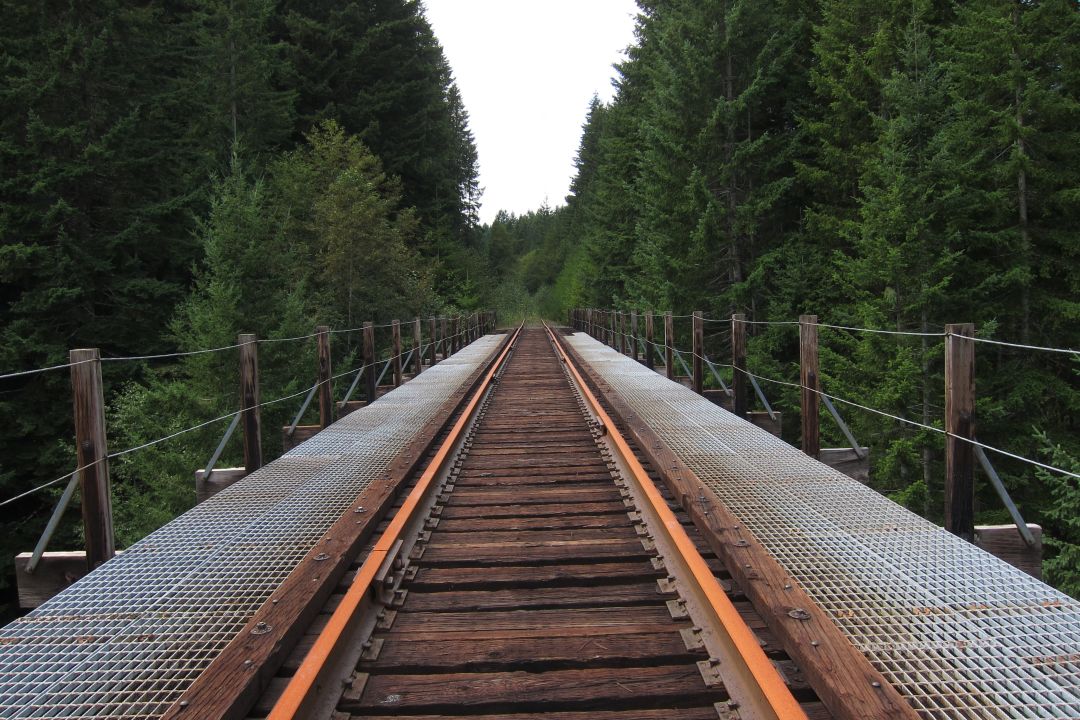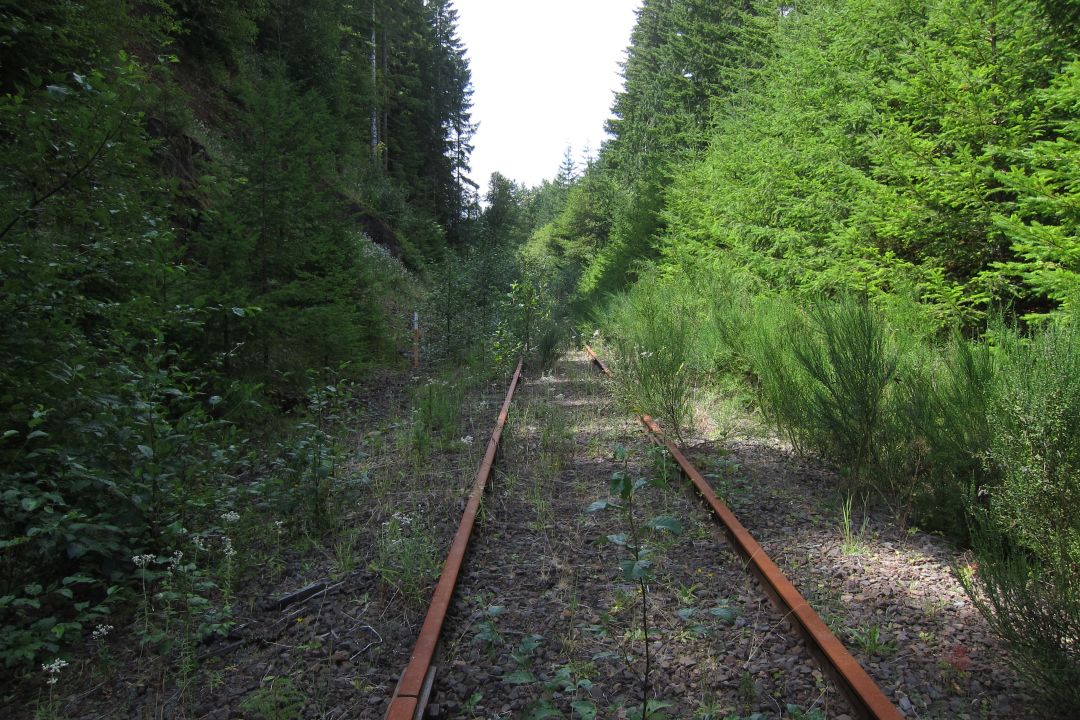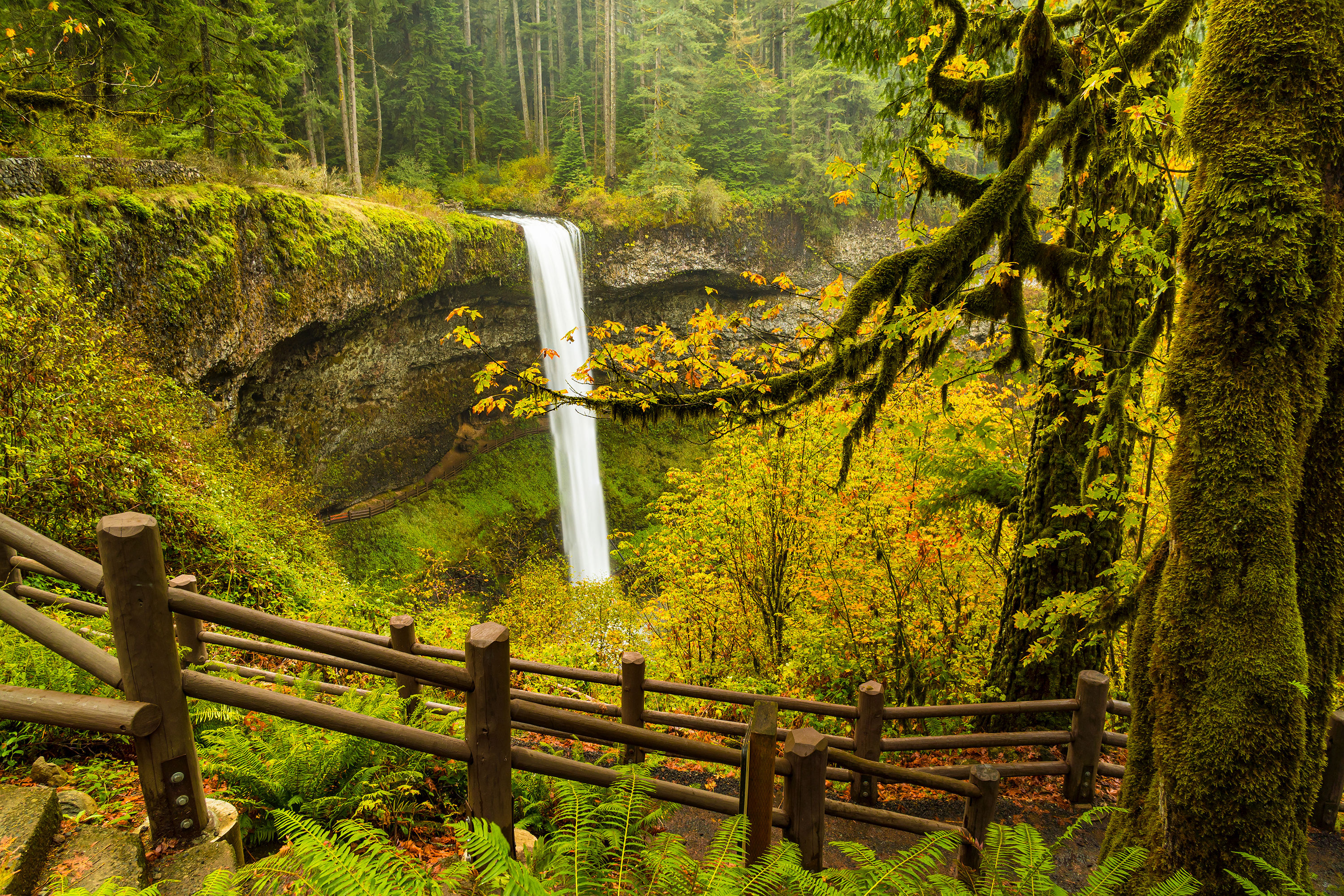At Last, the Portland-to-Coast Salmonberry Trail Gets the Green Light

A bridge with a bird's eye view of the Tillamook Forest along the proposed route of the Salmonberry Trail.
Eleven years ago, a winter storm ripped and twisted chunks of the Port of Tillamook Bay’s century-old rail line—the spike in the coffin for a route that once regularly shuttled lumber, cattle, and human passengers to and from Portland and the coast through some of Oregon’s most breath-taking scenery. The historic PR&N line soared on dizzying trestles above the Salmonberry River’s impenetrable old-growth and steep canyons; it broke through to the sea at the town of Wheeler before dipping down the coast to Tillamook.
Now, an ambitious vision for putting this route back into use—this time, for hikers—looks like it might actually happen. Over the past decade, the 86-mile Salmonberry Trail has been thoroughly mapped, heading east from the coast to Banks, Oregon. Its supporters (multiple agencies including the port, the Oregon Department of Forestry, the Confederated Tribes of Grande Ronde, and the Tillamook Forest Heritage Trust) coalesced into the official Salmonberry Trail Intergovernmental Agency. The trail has an information-rich website and its first full-time dedicated staffer, Tillamook Forest Heritage Trust outreach director Alana Kambury. (She's also a co-owner of Starvation Alley Cranberry Farms, one of PoMo's favorite food artisans.)
On March 20, the port approved a lease agreement for the agency to develop the old rail route. And according to Kambury, that means the Salmonberry Trail is (almost) officially a go. (Update: on April 6, the agency approved the port's proposed lease agreement.)
With the final pieces in place, she says, "we’re able to start fundraising to develop the trail as a rail-with-trail corridor suited for bikes—and equestrian use in some sections—and making it ADA suitable.”

An overgrown railbed along the proposed Salmonberry Trail route
But don’t start planning your bikepacking adventure just yet. The fundraising part, Kambury says, will take years. (Like five to 10, she cautions.) That said, the trail's supporters plan to keep the trail alive in the public imagination with guided tours for stakeholders in summer. (DIY hikers, be advised: right now, much of the trail is not safe for hikers, and all of it is currently uninsured.) Then there are trail-blazing partnerships like a first-ever Cycle Oregon Gravel Ride adjacent the Salmonberry Trail Corridor, set for October 5–7.
Once sufficient funding is in place, Kambury says the project will begin a massive, three-phase build-out.
The new momentum is heady stuff for Oregon hikers, bikers, and riders. The Salmonberry represents a major first: a trail that links the Portland area with the Pacific Ocean. But getting it built will be complicated, says Kambury—between the fundraising and the lease terms and the wide range of stakeholders. For now, we wait, and look for positive updates.
As Kambury says, “there are a lot of asterisks to the project.”




